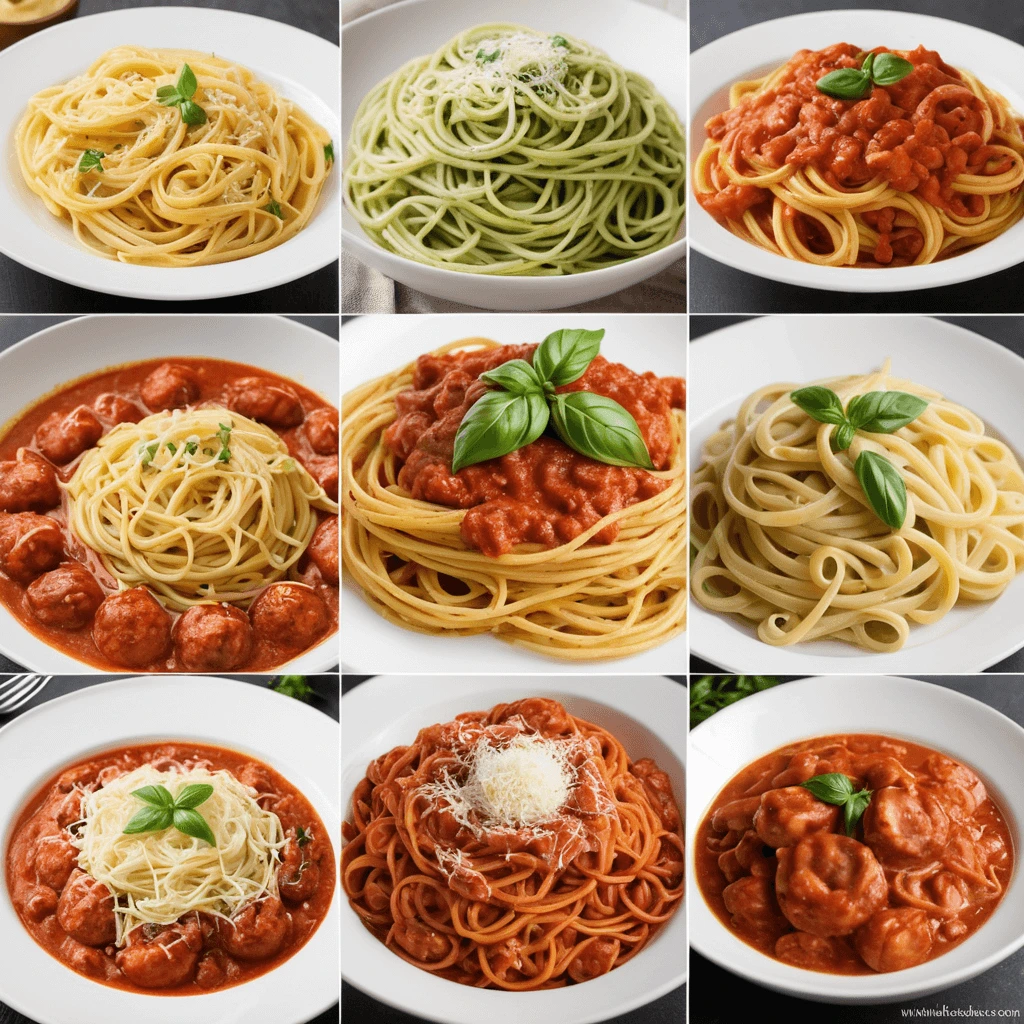ntroduction to Homemade Pasta Sauces
Pasta is a beloved staple in kitchens around the world, and what truly elevates a simple bowl of pasta is the sauce that accompanies it. From rich and hearty to light and fresh, pasta sauces can transform a basic dish into a culinary masterpiece. The beauty of making pasta sauce at home lies in its simplicity and versatility. With just a few ingredients and minimal cooking time, you can create delicious sauces that cater to your taste preferences and dietary needs.
In this post, we’ll explore 10 quick and easy pasta sauce recipes that you can whip up in no time. Whether you’re in the mood for a classic tomato-based sauce, a creamy delight, or a vibrant no-cook option, there’s something here for everyone. Not only will these homemade sauces enhance your pasta dishes, but they also allow you to control the flavors and ingredients, ensuring a fresher and healthier meal.
So, roll up your sleeves and get ready to discover the joy of crafting your own pasta sauces at home. Let’s dive into these delightful recipes that will make your pasta nights unforgettable!
Classic Tomato-Based Sauces
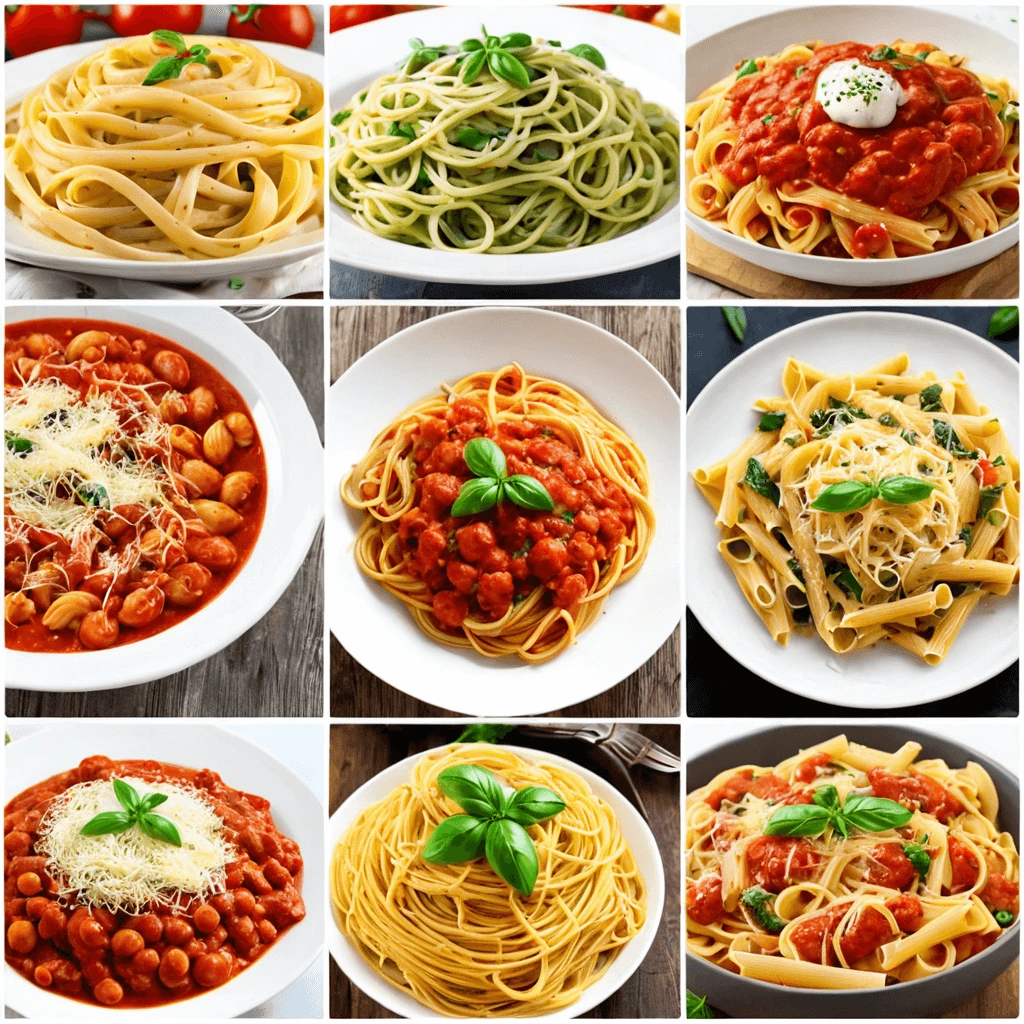
- Pasta Cooking Techniques:
- Link: The Perfect Pasta: Cooking Techniques
- Description: A comprehensive guide on how to cook pasta perfectly every time.
Marinara Sauce
Marinara sauce is a classic Italian tomato sauce that is beloved for its simplicity and robust flavor. Originating from Naples, this sauce is a staple in Italian cuisine and serves as the perfect base for a variety of pasta dishes. With just a handful of ingredients, you can create a delicious marinara sauce that will elevate your meals and impress your family and friends.
Ingredients
To make a basic marinara sauce, you will need the following ingredients:
- Canned Whole Tomatoes: Use high-quality San Marzano tomatoes for the best flavor. You can also use fresh tomatoes when they are in season.
- Garlic: Fresh garlic cloves add a fragrant aroma and depth of flavor.
- Olive Oil: Extra virgin olive oil is ideal for sautéing and adds richness to the sauce.
- Fresh Basil: Adds a burst of freshness and a hint of sweetness.
- Salt and Pepper: Essential for seasoning and enhancing the flavors.
Instructions
- Sauté the Garlic: In a medium saucepan, heat 2 tablespoons of olive oil over medium heat. Add 3-4 minced garlic cloves and sauté for about 1-2 minutes until fragrant, being careful not to let it brown.
- Add the Tomatoes: Pour in a 28-ounce can of whole tomatoes (with their juices) and crush them with a wooden spoon or your hands. If using fresh tomatoes, chop them and add them to the pan.
- Season the Sauce: Add a pinch of salt and pepper to taste. Bring the mixture to a simmer, then reduce the heat to low.
- Simmer: Let the sauce simmer for about 20-30 minutes, stirring occasionally. This allows the flavors to meld and the sauce to thicken. If you prefer a smoother sauce, you can use an immersion blender to puree it to your desired consistency.
- Add Fresh Basil: In the last few minutes of cooking, stir in a handful of fresh basil leaves, torn or chopped. This will infuse the sauce with a fresh, aromatic flavor.
- Taste and Adjust: Before serving, taste the sauce and adjust the seasoning as needed. You can add more salt, pepper, or even a pinch of sugar if the sauce is too acidic.
Serving Suggestions
Marinara sauce is incredibly versatile and can be used in various dishes:
- Pasta: Toss it with your favorite pasta, such as spaghetti or penne, for a classic meal.
- Pizza: Use it as a base sauce for homemade pizza.
- Dipping Sauce: Serve it as a dipping sauce for breadsticks or mozzarella sticks.
- Baked Dishes: Layer it in baked dishes like lasagna or eggplant Parmesan.
Storage Tips
- Refrigeration: Store any leftover marinara sauce in an airtight container in the refrigerator for up to 5 days.
- Freezing: Marinara sauce freezes well. Portion it into freezer-safe containers or bags and freeze for up to 3 months. Thaw in the refrigerator overnight before reheating.
Arrabbiata Sauce
Arrabbiata sauce is a fiery and flavorful Italian sauce that hails from the Lazio region, particularly Rome. The name “arrabbiata” translates to “angry” in Italian, which is a fitting description for this sauce’s bold and spicy character. Made with simple ingredients, this sauce is perfect for those who enjoy a little heat in their pasta dishes.
Ingredients
To prepare a classic arrabbiata sauce, you will need the following ingredients:
- Canned Whole Tomatoes: Opt for high-quality San Marzano tomatoes for the best flavor. You can also use crushed tomatoes if you prefer a smoother texture.
- Garlic: Fresh garlic cloves provide a robust flavor that complements the heat.
- Red Pepper Flakes: The star ingredient that gives arrabbiata its signature spiciness. Adjust the amount to suit your heat preference.
- Olive Oil: Extra virgin olive oil adds richness and depth to the sauce.
- Fresh Parsley or Basil: For garnish and a touch of freshness.
- Salt and Pepper: Essential for seasoning.
Instructions
- Sauté the Garlic: In a large skillet, heat 2 tablespoons of olive oil over medium heat. Add 3-4 minced garlic cloves and sauté for about 1-2 minutes until fragrant, being careful not to let it brown.
- Add Red Pepper Flakes: Stir in 1-2 teaspoons of red pepper flakes, depending on your desired level of heat. Sauté for an additional 30 seconds to release the flavors.
- Incorporate the Tomatoes: Pour in a 28-ounce can of whole tomatoes (with their juices) and crush them with a wooden spoon or your hands. If using crushed tomatoes, simply add them to the pan.
- Season the Sauce: Add a pinch of salt and pepper to taste. Bring the mixture to a simmer, then reduce the heat to low.
- Simmer: Allow the sauce to simmer for about 20-30 minutes, stirring occasionally. This will help the flavors meld and the sauce to thicken. If you prefer a smoother sauce, you can use an immersion blender to puree it to your desired consistency.
- Finish with Fresh Herbs: In the last few minutes of cooking, stir in a handful of chopped fresh parsley or basil for added flavor and color.
- Taste and Adjust: Before serving, taste the sauce and adjust the seasoning as needed. You can add more red pepper flakes for extra heat or a pinch of sugar if the sauce is too acidic.
Serving Suggestions
Arrabbiata sauce pairs beautifully with various pasta types and dishes:
- Pasta: Toss it with penne, rigatoni, or spaghetti for a classic arrabbiata pasta dish.
- Seafood: Use it as a sauce for shrimp or scallops for a spicy seafood pasta.
- Vegetables: Drizzle it over roasted vegetables or use it as a base for a vegetable bake.
- Pizza: Spread it on pizza dough for a spicy twist on traditional pizza.
Storage Tips
- Refrigeration: Store any leftover arrabbiata sauce in an airtight container in the refrigerator for up to 5 days.
- Freezing: This sauce freezes well. Portion it into freezer-safe containers or bags and freeze for up to 3 months. Thaw in the refrigerator overnight before reheating.
Bolognese Sauce
Bolognese sauce, or “ragù alla Bolognese,” is a rich and hearty meat sauce that originates from Bologna, Italy. Unlike many tomato-based sauces, Bolognese is characterized by its use of ground meat, vegetables, and a slow-cooked tomato base, resulting in a deeply flavorful sauce that pairs beautifully with pasta. This sauce is perfect for special occasions or a comforting family dinner.
Ingredients
To create a traditional Bolognese sauce, you will need the following ingredients:
- Ground Meat: A combination of ground beef and pork is commonly used, but you can also use veal or turkey for a lighter option.
- Onion, Carrot, and Celery: These aromatic vegetables, known as “soffritto,” form the flavor base of the sauce.
- Garlic: Fresh garlic adds depth and richness.
- Canned Tomatoes: Use crushed or diced tomatoes for a robust tomato flavor.
- Red Wine: A splash of red wine enhances the sauce’s complexity and richness.
- Milk or Cream: This ingredient helps to mellow the acidity of the tomatoes and adds creaminess to the sauce.
- Olive Oil: Extra virgin olive oil is ideal for sautéing the vegetables and meat.
- Salt and Pepper: Essential for seasoning.
- Fresh Herbs: Bay leaves, thyme, or parsley can be added for extra flavor.
Instructions
- Prepare the Soffritto: In a large, heavy-bottomed pot or Dutch oven, heat 2 tablespoons of olive oil over medium heat. Add 1 finely chopped onion, 1 diced carrot, and 1 diced celery stalk. Sauté for about 5-7 minutes until the vegetables are soft and translucent.
- Add Garlic: Stir in 2-3 minced garlic cloves and sauté for an additional minute until fragrant.
- Brown the Meat: Increase the heat to medium-high and add 1 pound of ground beef and 1/2 pound of ground pork. Cook until the meat is browned, breaking it up with a wooden spoon as it cooks. This should take about 8-10 minutes.
- Deglaze with Wine: Pour in 1 cup of red wine and scrape the bottom of the pot to release any browned bits. Allow the wine to simmer for about 5 minutes until it has reduced slightly.
- Add Tomatoes and Herbs: Stir in a 28-ounce can of crushed tomatoes, along with 1-2 bay leaves and a few sprigs of fresh thyme (or 1 teaspoon of dried thyme). Season with salt and pepper to taste.
- Simmer the Sauce: Reduce the heat to low and let the sauce simmer gently for at least 1 hour, stirring occasionally. For a richer flavor, you can simmer it for up to 2-3 hours. The longer it cooks, the more the flavors will develop.
- Finish with Milk or Cream: In the last 15 minutes of cooking, stir in 1/2 cup of milk or cream. This will help to balance the acidity of the tomatoes and create a velvety texture.
- Taste and Adjust: Before serving, taste the sauce and adjust the seasoning as needed. Remove the bay leaves and any thyme stems.
Serving Suggestions
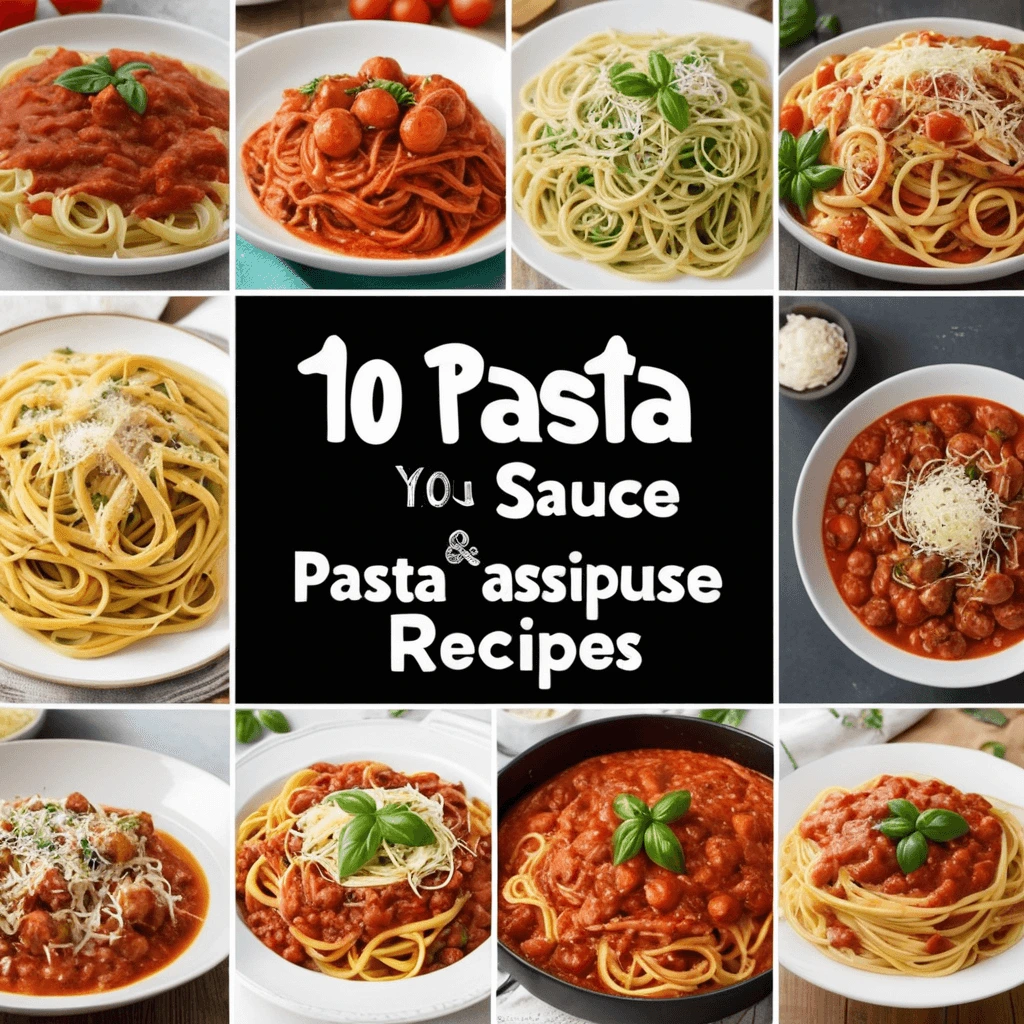
Bolognese sauce is incredibly versatile and can be enjoyed in various ways:
- Pasta: Serve it over tagliatelle, pappardelle, or fettuccine for a classic dish. Toss the pasta with the sauce to ensure even coating.
- Lasagna: Use it as a filling for lasagna, layering it with pasta sheets and béchamel sauce.
- Polenta: Serve it over creamy polenta for a comforting meal.
- Stuffed Peppers: Use it as a filling for stuffed bell peppers or zucchini boats.
Storage Tips
- Refrigeration: Store any leftover Bolognese sauce in an airtight container in the refrigerator for up to 5 days.
- Freezing: This sauce freezes exceptionally well. Portion it into freezer-safe containers or bags and freeze for up to 3 months. Thaw in the refrigerator overnight before reheating.
Creamy and Rich Sauces
Alfredo Sauce
Alfredo sauce is a creamy, rich sauce that has become a beloved staple in Italian-American cuisine. Originating from Rome, this sauce is traditionally made with just a few simple ingredients, yet it delivers a luxurious flavor and texture that elevates any pasta dish. Whether you’re preparing a classic fettuccine Alfredo or using it as a base for other dishes, this sauce is sure to impress.
Ingredients
To make a classic Alfredo sauce, you will need the following ingredients:
- Butter: Unsalted butter is preferred for a rich, creamy base.
- Heavy Cream: This is the key ingredient that gives Alfredo its signature creaminess.
- Parmesan Cheese: Freshly grated Parmesan cheese adds a nutty flavor and helps thicken the sauce.
- Garlic: Optional, but minced garlic can enhance the flavor profile.
- Salt and Pepper: Essential for seasoning.
- Nutmeg: A pinch of freshly grated nutmeg adds warmth and depth to the sauce (optional).
Instructions
- Melt the Butter: In a large skillet, melt 1/2 cup (1 stick) of unsalted butter over medium heat. If using garlic, add 2-3 minced garlic cloves and sauté for about 1 minute until fragrant, being careful not to let it brown.
- Add Heavy Cream: Pour in 1 cup of heavy cream and bring the mixture to a gentle simmer. Stir continuously to combine the butter and cream.
- Incorporate Parmesan Cheese: Gradually whisk in 1 to 1.5 cups of freshly grated Parmesan cheese. Continue to stir until the cheese is melted and the sauce is smooth. If the sauce is too thick, you can add a little more cream or a splash of pasta cooking water to reach your desired consistency.
- Season the Sauce: Add salt and pepper to taste. If desired, grate a pinch of nutmeg into the sauce for added flavor.
- Combine with Pasta: Once the sauce is ready, toss it with your cooked pasta of choice (fettuccine is traditional) until the pasta is well coated. If the sauce seems too thick, add a bit of reserved pasta water to loosen it up.
- Serve Immediately: Alfredo sauce is best served fresh. Garnish with additional grated Parmesan cheese and freshly cracked black pepper before serving.
Serving Suggestions
Alfredo sauce is incredibly versatile and can be used in various dishes:
- Fettuccine Alfredo: The classic dish, simply toss fettuccine with the sauce and serve.
- Chicken Alfredo: Add grilled or sautéed chicken for a heartier meal.
- Shrimp Alfredo: Incorporate sautéed shrimp for a delicious seafood twist.
- Vegetable Alfredo: Mix in steamed broccoli, peas, or spinach for added nutrition and color.
Storage Tips
- Refrigeration: Store any leftover Alfredo sauce in an airtight container in the refrigerator for up to 3 days. The sauce may thicken as it cools.
- Reheating: When reheating, add a splash of cream or milk to loosen the sauce and stir over low heat until warmed through. Be careful not to overheat, as the sauce can separate.
Carbonara Sauce
Carbonara sauce is a classic Italian dish that hails from the Lazio region, particularly Rome. Known for its creamy texture and rich flavor, this sauce is made without cream, relying instead on eggs, cheese, and cured pork to create its signature richness. Carbonara is a beloved comfort food that is both simple to prepare and incredibly satisfying.
Ingredients
To make an authentic Carbonara sauce, you will need the following ingredients:
- Pasta: Traditionally, spaghetti or fettuccine is used, but you can also use bucatini or rigatoni.
- Guanciale: This is the traditional cured pork used in Carbonara. If guanciale is unavailable, pancetta or even high-quality bacon can be used as substitutes.
- Eggs: Large eggs are essential for creating the creamy sauce. Some recipes use only the yolks for a richer flavor.
- Pecorino Romano Cheese: This sharp, salty cheese is the traditional choice for Carbonara. You can also mix in some freshly grated Parmesan for added flavor.
- Black Pepper: Freshly cracked black pepper is crucial for seasoning and adds a nice kick to the dish.
- Salt: Use sparingly, as the cheese and cured meat are already salty.
Instructions
- Cook the Pasta: Bring a large pot of salted water to a boil. Add your pasta and cook according to package instructions until al dente. Reserve about 1 cup of pasta cooking water before draining.
- Prepare the Guanciale: While the pasta cooks, cut 4 ounces of guanciale (or pancetta) into small strips or cubes. In a large skillet, cook the guanciale over medium heat until it becomes crispy and golden, about 5-7 minutes. Remove from heat and set aside, leaving the rendered fat in the pan.
- Mix the Egg and Cheese: In a mixing bowl, whisk together 2 large eggs and 1 cup of freshly grated Pecorino Romano cheese until well combined. Add a generous amount of freshly cracked black pepper to the mixture.
- Combine Pasta and Guanciale: Once the pasta is cooked and drained, add it directly to the skillet with the guanciale (off the heat). Toss to combine, allowing the pasta to absorb some of the rendered fat.
- Create the Sauce: Quickly pour the egg and cheese mixture over the hot pasta, tossing continuously to create a creamy sauce. The residual heat from the pasta will cook the eggs gently, creating a silky texture. If the sauce is too thick, add a little reserved pasta water, a tablespoon at a time, until you reach your desired consistency.
- Serve Immediately: Plate the Carbonara and garnish with additional grated Pecorino Romano cheese and more freshly cracked black pepper. Serve immediately for the best texture and flavor.
Serving Suggestions
Carbonara sauce is best enjoyed on its own, but you can enhance the dish with:
- Fresh Herbs: A sprinkle of fresh parsley or basil can add a pop of color and freshness.
- Vegetables: For a twist, consider adding peas or sautéed mushrooms for added texture and flavor.
- Crusty Bread: Serve with a side of crusty bread to soak up any leftover sauce.
Storage Tips
- Refrigeration: Carbonara is best enjoyed fresh, but if you have leftovers, store them in an airtight container in the refrigerator for up to 2 days.
- Reheating: When reheating, add a splash of water or cream to loosen the sauce and gently warm it over low heat. Be careful not to overheat, as the eggs can scramble.
Pesto Sauce
Pesto sauce is a vibrant and aromatic sauce that originates from the Liguria region of Italy, particularly the city of Genoa. Known for its fresh flavors and bright green color, traditional pesto is made with basil, garlic, pine nuts, Parmesan cheese, and olive oil. This versatile sauce can be used in a variety of dishes, making it a favorite among home cooks and chefs alike.
Ingredients
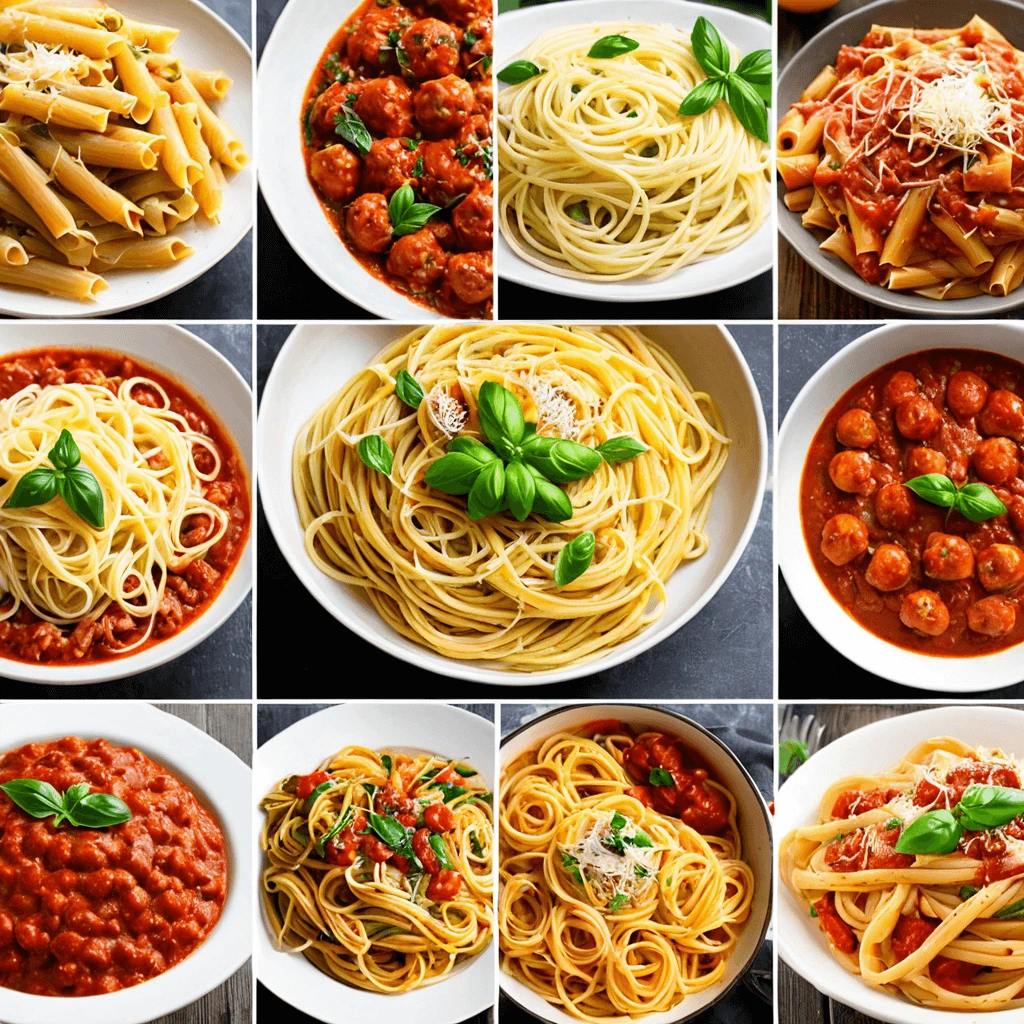
To make a classic basil pesto sauce, you will need the following ingredients:
- Fresh Basil Leaves: The star ingredient, providing the signature flavor and color.
- Garlic: Fresh garlic cloves add a pungent kick to the sauce.
- Pine Nuts: These nuts contribute a rich, buttery flavor and creamy texture. You can also substitute with walnuts or almonds if desired.
- Parmesan Cheese: Freshly grated Parmesan adds a salty, nutty flavor that enhances the overall taste of the pesto.
- Olive Oil: Extra virgin olive oil is preferred for its rich flavor and health benefits.
- Salt and Pepper: Essential for seasoning and balancing the flavors.
- Lemon Juice: Optional, but a splash of fresh lemon juice can brighten the sauce and enhance its freshness.
Instructions
- Toast the Pine Nuts: (Optional) For added flavor, toast 1/4 cup of pine nuts in a dry skillet over medium heat for 3-5 minutes, stirring frequently until golden and fragrant. Be careful not to burn them.
- Blend the Ingredients: In a food processor, combine 2 cups of fresh basil leaves, 2-3 minced garlic cloves, and the toasted pine nuts. Pulse until the ingredients are finely chopped.
- Add Cheese and Oil: Add 1/2 cup of freshly grated Parmesan cheese and pulse again to combine. With the food processor running, slowly drizzle in 1/2 cup of extra virgin olive oil until the mixture is smooth and creamy. If the pesto is too thick, you can add a little more olive oil or a splash of water to reach your desired consistency.
- Season the Pesto: Taste the pesto and season with salt and freshly cracked black pepper to your liking. If using, add a squeeze of fresh lemon juice for brightness.
- Store or Serve: Use the pesto immediately or store it in an airtight container. To prevent browning, drizzle a thin layer of olive oil on top before sealing.
Serving Suggestions
Pesto sauce is incredibly versatile and can be used in a variety of dishes:
- Pasta: Toss it with your favorite pasta, such as spaghetti, penne, or fusilli, for a quick and flavorful meal.
- Sandwiches and Wraps: Spread pesto on sandwiches or wraps for an extra layer of flavor.
- Pizza: Use it as a base sauce for homemade pizza instead of traditional tomato sauce.
- Salad Dressing: Thin it out with a little extra olive oil and vinegar for a delicious salad dressing.
- Marinade: Use pesto as a marinade for chicken, fish, or vegetables before grilling or roasting.
Storage Tips
- Refrigeration: Store leftover pesto in an airtight container in the refrigerator for up to 1 week. To maintain its vibrant color, cover the surface with a thin layer of olive oil.
- Freezing: Pesto freezes well. Portion it into ice cube trays or freezer-safe containers and freeze for up to 3 months. Thaw in the refrigerator or at room temperature before using.
Quick and Easy No-Cook Sauces
Olive Oil and Garlic Sauce
Olive oil and garlic sauce, often referred to as “aglio e olio,” is a simple yet flavorful sauce that highlights the beauty of high-quality ingredients. This classic Italian sauce is incredibly easy to prepare and requires minimal cooking, making it a perfect choice for a quick weeknight dinner or a late-night snack. The combination of fragrant garlic and rich olive oil creates a deliciously aromatic sauce that pairs beautifully with pasta, vegetables, and more.
Ingredients
To make a basic olive oil and garlic sauce, you will need the following ingredients:
- Extra Virgin Olive Oil: The quality of the olive oil is crucial, as it forms the base of the sauce. Choose a good-quality extra virgin olive oil for the best flavor.
- Garlic: Fresh garlic cloves are essential for the sauce. You can adjust the amount based on your preference for garlic flavor.
- Red Pepper Flakes: Optional, but a pinch of red pepper flakes adds a nice kick and depth to the sauce.
- Fresh Parsley: Chopped fresh parsley adds a pop of color and freshness.
- Salt: For seasoning.
- Pasta: Spaghetti or linguine is commonly used, but you can use any pasta you prefer.
Instructions
- Cook the Pasta: Bring a large pot of salted water to a boil. Add your pasta of choice and cook according to package instructions until al dente. Reserve about 1 cup of pasta cooking water before draining.
- Prepare the Garlic: While the pasta cooks, peel and thinly slice 4-6 garlic cloves. The thickness of the slices can affect the flavor intensity, so adjust according to your preference.
- Heat the Olive Oil: In a large skillet, heat 1/2 cup of extra virgin olive oil over medium heat. Add the sliced garlic and sauté gently, stirring frequently, for about 2-3 minutes. Be careful not to let the garlic brown, as it can become bitter.
- Add Red Pepper Flakes: If using, add a pinch of red pepper flakes to the skillet and sauté for an additional 30 seconds to infuse the oil with heat.
- Combine with Pasta: Once the pasta is cooked and drained, add it directly to the skillet with the garlic and olive oil. Toss to coat the pasta evenly in the sauce. If the sauce seems too dry, add a little reserved pasta water to achieve your desired consistency.
- Finish with Fresh Parsley: Remove the skillet from heat and stir in a handful of chopped fresh parsley. This adds a burst of color and freshness to the dish.
- Serve Immediately: Plate the pasta and drizzle with a little extra olive oil if desired. Garnish with additional parsley and freshly cracked black pepper before serving.
Serving Suggestions
Olive oil and garlic sauce is versatile and can be enjoyed in various ways:
- Pasta: Serve it as a simple pasta dish, or add cooked vegetables like spinach, cherry tomatoes, or zucchini for added nutrition.
- Bruschetta: Drizzle the olive oil and garlic mixture over toasted bread for a delicious bruschetta appetizer.
- Seafood: Toss it with sautéed shrimp or scallops for a quick seafood pasta dish.
- Grains: Use it to dress cooked grains like quinoa or farro for a flavorful side dish.
Storage Tips
- Refrigeration: Store any leftover olive oil and garlic sauce in an airtight container in the refrigerator for up to 3 days. The garlic flavor may intensify as it sits.
- Reheating: When reheating, warm it gently over low heat to prevent the garlic from burning. You may need to add a splash of olive oil or water to loosen the sauce.
Fresh Tomato Sauce
Fresh tomato sauce is a vibrant and flavorful alternative to traditional cooked sauces, showcasing the natural sweetness and acidity of ripe tomatoes. This no-cook sauce is incredibly easy to prepare and is perfect for those warm summer days when you want a light and refreshing meal. With just a few simple ingredients, you can create a delicious sauce that enhances pasta, salads, and more.
Ingredients
To make a fresh tomato sauce, you will need the following ingredients:
- Ripe Tomatoes: Choose high-quality, ripe tomatoes for the best flavor. Varieties like Roma, San Marzano, or heirloom tomatoes work particularly well.
- Garlic: Fresh garlic adds depth and aroma to the sauce.
- Extra Virgin Olive Oil: A good-quality olive oil enhances the flavor and richness of the sauce.
- Fresh Basil: This herb adds a fragrant, aromatic quality that complements the tomatoes beautifully.
- Salt and Pepper: Essential for seasoning and balancing the flavors.
- Balsamic Vinegar: Optional, but a splash of balsamic vinegar can add a touch of sweetness and acidity.
Instructions
- Prepare the Tomatoes: Start by washing and drying your tomatoes. If using larger tomatoes, you may want to remove the core and chop them into smaller pieces. For smaller tomatoes, such as cherry or grape tomatoes, simply halve or quarter them.
- Mince the Garlic: Peel and finely mince 2-3 garlic cloves. The amount can be adjusted based on your preference for garlic flavor.
- Combine Ingredients: In a large mixing bowl, combine the chopped tomatoes, minced garlic, and a generous drizzle of extra virgin olive oil (about 1/4 cup). If using, add a splash of balsamic vinegar for extra flavor.
- Season the Sauce: Add salt and freshly cracked black pepper to taste. Toss the mixture gently to combine, allowing the flavors to meld.
- Add Fresh Basil: Tear or chop a handful of fresh basil leaves and fold them into the tomato mixture. This will infuse the sauce with a fresh, aromatic quality.
- Let It Rest: Allow the sauce to sit for about 15-30 minutes at room temperature. This resting time helps the flavors develop and the tomatoes to release their juices.
- Serve: Toss the fresh tomato sauce with your favorite cooked pasta, or use it as a topping for bruschetta, grilled chicken, or fish. It can also be served as a fresh salad dressing or a dip for crusty bread.
Serving Suggestions
Fresh tomato sauce is versatile and can be enjoyed in various ways:
- Pasta: Toss it with spaghetti, penne, or any pasta of your choice for a light and refreshing meal.
- Bruschetta: Spoon the sauce over toasted bread for a delicious appetizer.
- Grilled Vegetables: Drizzle it over grilled vegetables for added flavor.
- Pizza: Use it as a base sauce for homemade pizza, topped with fresh mozzarella and basil.
Storage Tips
- Refrigeration: Store any leftover fresh tomato sauce in an airtight container in the refrigerator for up to 3 days. The flavors may intensify as it sits.
- Freezing: While fresh tomato sauce is best enjoyed fresh, you can freeze it in airtight containers for up to 2 months. Thaw in the refrigerator before using.
Avocado Sauce
Avocado sauce is a creamy, nutritious, and versatile sauce that adds a delightful twist to a variety of dishes. Known for its rich texture and mild flavor, this sauce is not only delicious but also packed with healthy fats, making it a great alternative to traditional creamy sauces. Perfect for pasta, tacos, salads, or as a dip, avocado sauce is a fantastic way to incorporate more plant-based ingredients into your meals.
Ingredients
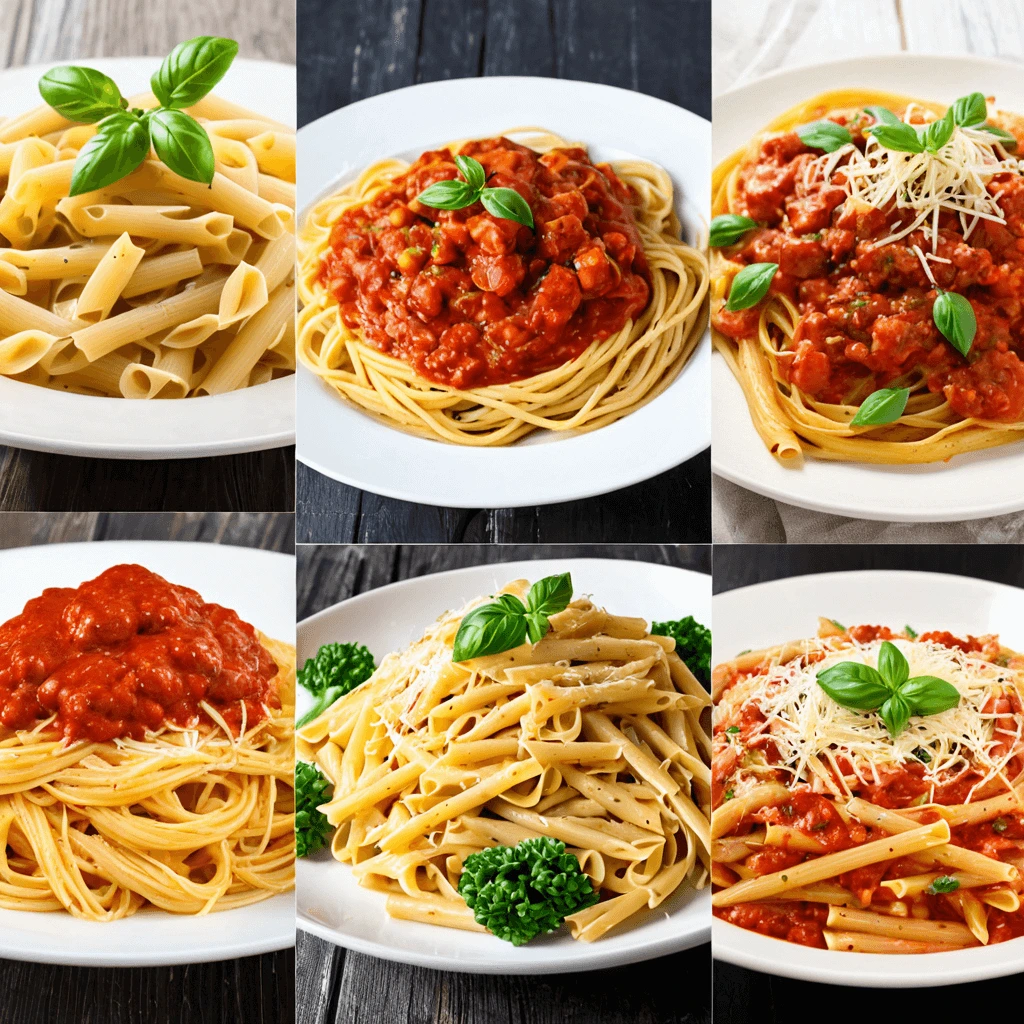
To make a basic avocado sauce, you will need the following ingredients:
- Ripe Avocados: Choose ripe avocados that yield slightly to gentle pressure for the best creaminess.
- Garlic: Fresh garlic adds a zesty kick to the sauce.
- Lime Juice: Freshly squeezed lime juice brightens the flavor and helps prevent the avocados from browning.
- Olive Oil: Extra virgin olive oil adds richness and enhances the overall flavor.
- Fresh Herbs: Cilantro or parsley can be added for freshness and additional flavor.
- Salt and Pepper: Essential for seasoning.
- Water: To adjust the consistency of the sauce.
Instructions
- Prepare the Avocados: Cut 2 ripe avocados in half, remove the pits, and scoop the flesh into a food processor or blender.
- Add Flavorings: Add 1-2 minced garlic cloves, the juice of 1 lime, and about 1/4 cup of extra virgin olive oil to the food processor. If using, add a handful of fresh herbs (cilantro or parsley) for added flavor.
- Blend the Ingredients: Blend the mixture until smooth and creamy. If the sauce is too thick, add a little water, one tablespoon at a time, until you reach your desired consistency.
- Season the Sauce: Taste the sauce and season with salt and freshly cracked black pepper to your liking. Blend again to combine.
- Serve or Store: Use the avocado sauce immediately, or store it in an airtight container. To prevent browning, press plastic wrap directly onto the surface of the sauce before sealing.
Serving Suggestions
Avocado sauce is incredibly versatile and can be used in a variety of dishes:
- Pasta: Toss it with cooked pasta for a creamy, dairy-free alternative to traditional sauces. It pairs well with whole grain or gluten-free pasta.
- Tacos: Use it as a topping for tacos, burritos, or quesadillas for a fresh and creamy element.
- Salads: Drizzle it over salads as a dressing or use it as a dip for fresh vegetables.
- Sandwiches and Wraps: Spread it on sandwiches or wraps for added creaminess and flavor.
- Dips: Serve it as a dip for tortilla chips, pita bread, or fresh veggies.
Storage Tips
- Refrigeration: Store any leftover avocado sauce in an airtight container in the refrigerator for up to 2 days. The lime juice will help slow down browning, but the sauce is best enjoyed fresh.
- Freezing: While avocado sauce can be frozen, it may change in texture upon thawing. If you choose to freeze it, store it in an airtight container and use it within 1-2 months. Thaw in the refrigerator before using.
Vegetarian and Vegan Pasta Sauces
Spinach and Ricotta Sauce
Spinach and ricotta sauce is a creamy, flavorful sauce that combines the earthy taste of spinach with the rich, creamy texture of ricotta cheese. This sauce is not only delicious but also packed with nutrients, making it a great option for a healthy meal. It pairs beautifully with pasta, but can also be used in lasagna, as a filling for stuffed shells, or as a topping for grilled chicken or fish.
Ingredients
To make spinach and ricotta sauce, you will need the following ingredients:
- Fresh Spinach: Use fresh spinach for the best flavor and texture. You can also use frozen spinach, but be sure to thaw and drain it well.
- Ricotta Cheese: This creamy cheese adds richness and a mild flavor to the sauce.
- Garlic: Fresh garlic adds depth and aroma to the sauce.
- Olive Oil: Extra virgin olive oil enhances the flavor and richness of the sauce.
- Parmesan Cheese: Freshly grated Parmesan adds a salty, nutty flavor that complements the other ingredients.
- Salt and Pepper: Essential for seasoning.
- Nutmeg: A pinch of freshly grated nutmeg adds warmth and depth to the sauce (optional).
Instructions
- Sauté the Spinach: In a large skillet, heat 1 tablespoon of olive oil over medium heat. Add 4 cups of fresh spinach and sauté until wilted, about 2-3 minutes. If using frozen spinach, make sure it is thoroughly thawed and drained before adding it to the skillet.
- Add Garlic: Add 2-3 minced garlic cloves to the skillet and sauté for an additional 1-2 minutes until fragrant. Be careful not to let the garlic brown.
- Blend the Sauce: In a food processor, combine the sautéed spinach and garlic, 1 cup of ricotta cheese, 1/2 cup of freshly grated Parmesan cheese, and a pinch of salt, pepper, and nutmeg (if using). Blend until smooth and creamy. If the sauce is too thick, you can add a splash of water or olive oil to reach your desired consistency.
- Taste and Adjust: Taste the sauce and adjust the seasoning as needed. You can add more salt, pepper, or Parmesan cheese for extra flavor.
- Combine with Pasta: Cook your favorite pasta according to package instructions. Drain the pasta and return it to the pot. Add the spinach and ricotta sauce to the pasta and toss until well combined. If the sauce seems too thick, add a little reserved pasta water to loosen it up.
- Serve: Plate the pasta and garnish with additional grated Parmesan cheese and freshly cracked black pepper before serving.
Serving Suggestions
Spinach and ricotta sauce is versatile and can be enjoyed in various ways:
- Pasta: Serve it over your choice of pasta, such as fettuccine, penne, or farfalle.
- Lasagna: Use it as a filling for vegetarian lasagna, layering it with marinara sauce and noodles.
- Stuffed Shells: Fill cooked pasta shells with the spinach and ricotta mixture, top with marinara sauce, and bake until bubbly.
- Grilled Chicken or Fish: Use it as a sauce over grilled chicken or fish for a nutritious and flavorful meal.
Storage Tips
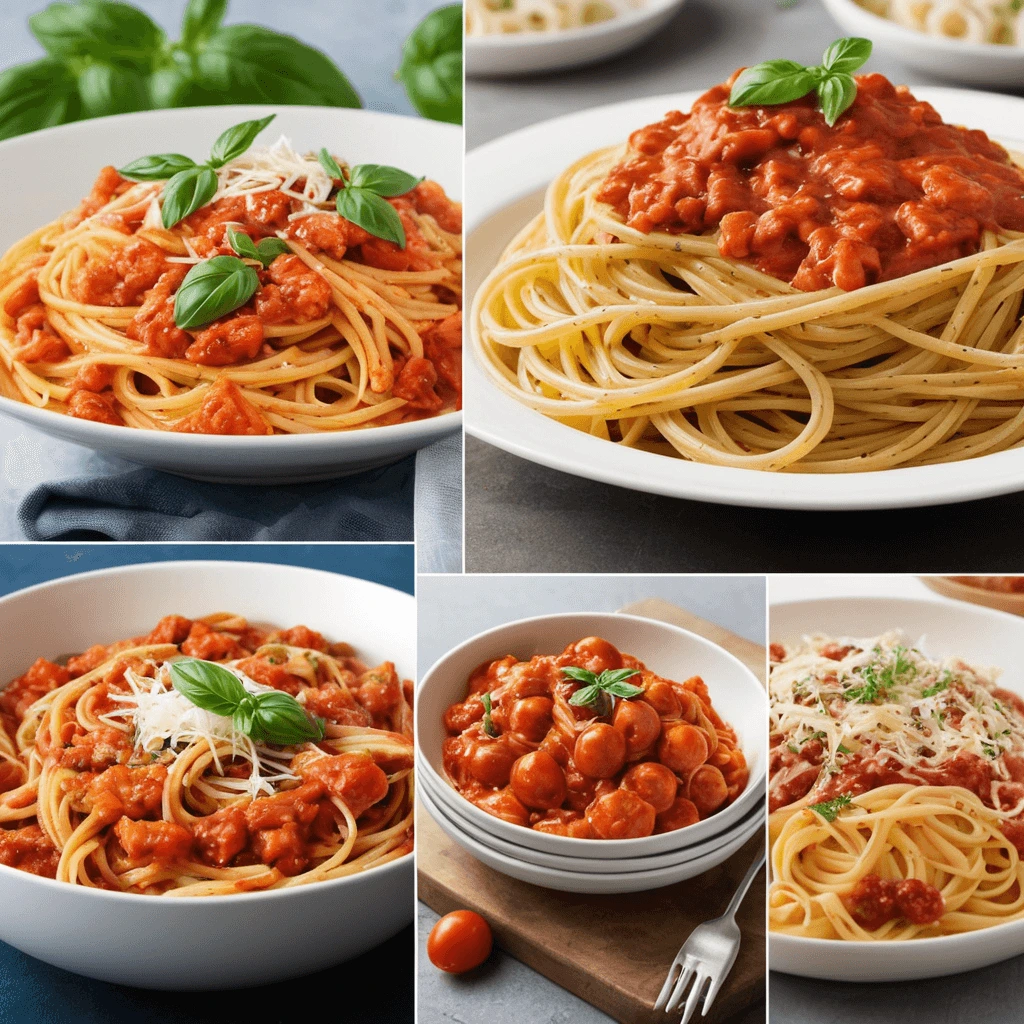
- Refrigeration: Store any leftover spinach and ricotta sauce in an airtight container in the refrigerator for up to 3 days. The flavors may deepen as it sits.
- Freezing: This sauce can be frozen for up to 2 months. Store it in an airtight container or freezer-safe bag. Thaw in the refrigerator overnight before reheating.
Roasted Red Pepper Sauce
Roasted red pepper sauce is a vibrant and flavorful sauce that brings a touch of sweetness and smokiness to your dishes. Made from roasted red bell peppers, this sauce is not only delicious but also incredibly versatile. It can be used as a pasta sauce, a dip, or a spread, making it a fantastic addition to your culinary repertoire. The bright color and rich flavor of this sauce make it a favorite for both casual meals and elegant dinners.
Ingredients
To make roasted red pepper sauce, you will need the following ingredients:
- Roasted Red Peppers: You can use jarred roasted red peppers for convenience or roast your own fresh red bell peppers.
- Garlic: Fresh garlic adds depth and aroma to the sauce.
- Olive Oil: Extra virgin olive oil enhances the flavor and richness of the sauce.
- Onion: Finely chopped onion adds sweetness and complexity.
- Vegetable Broth: This adds moisture and flavor to the sauce. You can also use water or white wine.
- Fresh Herbs: Basil, parsley, or thyme can add freshness and enhance the overall flavor.
- Salt and Pepper: Essential for seasoning.
- Lemon Juice: A splash of lemon juice brightens the sauce and adds acidity (optional).
Instructions
- Prepare the Roasted Peppers: If using fresh red bell peppers, preheat your oven to 450°F (230°C). Cut the peppers in half, remove the seeds, and place them cut-side down on a baking sheet. Roast for about 20-25 minutes, or until the skins are charred and blistered. Remove from the oven, cover with foil, and let them steam for about 10 minutes. Once cooled, peel off the skins and set aside. If using jarred roasted red peppers, simply drain and rinse them.
- Sauté the Aromatics: In a large skillet, heat 2 tablespoons of olive oil over medium heat. Add 1 finely chopped onion and sauté for about 3-4 minutes until translucent.
- Add Garlic: Stir in 2-3 minced garlic cloves and sauté for an additional minute until fragrant.
- Blend the Sauce: In a blender or food processor, combine the roasted red peppers, sautéed onion and garlic, and 1/2 cup of vegetable broth. Blend until smooth and creamy. If the sauce is too thick, you can add more broth or water to reach your desired consistency.
- Season the Sauce: Taste the sauce and season with salt, pepper, and a splash of lemon juice if desired. Blend again to combine.
- Heat the Sauce: Pour the blended sauce back into the skillet and heat over low heat for about 5 minutes, stirring occasionally. This allows the flavors to meld together.
- Serve: Toss the roasted red pepper sauce with your favorite cooked pasta, or use it as a sauce for grilled chicken, fish, or vegetables.
Serving Suggestions
Roasted red pepper sauce is versatile and can be enjoyed in various ways:
- Pasta: Serve it over spaghetti, penne, or any pasta of your choice for a flavorful meal.
- Dips: Use it as a dip for pita chips, crackers, or fresh vegetables.
- Spread: Spread it on sandwiches, wraps, or toast for added flavor.
- Pizza: Use it as a base sauce for homemade pizza, topped with mozzarella and fresh basil.
Storage Tips
- Refrigeration: Store any leftover roasted red pepper sauce in an airtight container in the refrigerator for up to 5 days. The flavors may deepen as it sits.
- Freezing: This sauce can be frozen for up to 3 months. Store it in an airtight container or freezer-safe bag. Thaw in the refrigerator overnight before reheating.
Conclusion
In conclusion, making pasta sauce at home is not only quick and easy but also a rewarding way to elevate your meals with fresh, vibrant flavors. From the classic richness of Bolognese and Alfredo to the light and refreshing notes of fresh tomato and avocado sauces, there’s a pasta sauce for every palate and occasion. Each recipe offers a unique taste experience, allowing you to customize your dishes according to your preferences and dietary needs.
These ten pasta sauce recipes are designed to inspire your culinary creativity and encourage you to experiment with different ingredients and flavors. Whether you’re preparing a cozy family dinner, hosting friends, or simply looking for a quick weeknight meal, these sauces can transform a simple bowl of pasta into a delightful feast.
So, roll up your sleeves, gather your ingredients, and start exploring the wonderful world of homemade pasta sauces. Don’t hesitate to share your own variations and experiences in the comments below! We’d love to hear how you’ve made these recipes your own. Enjoy the process, savor the flavors, and most importantly, have fun in the kitchen!

